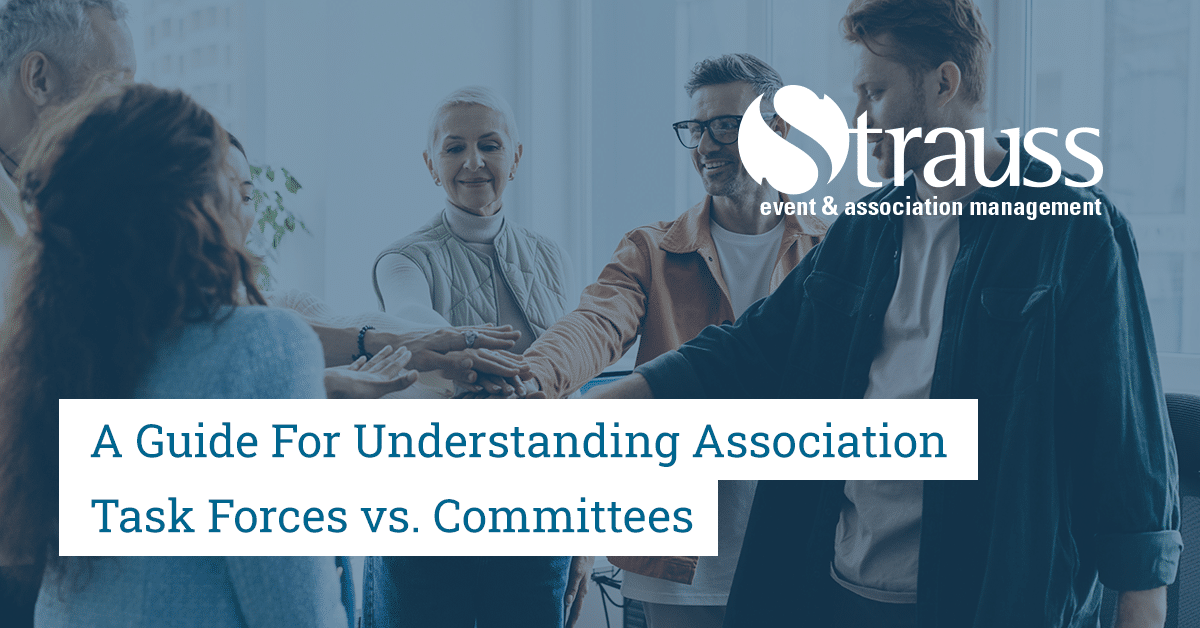Understanding the roles of association task forces and committees is crucial for effective organizational governance. Both play important roles, but they have different functions, durations, and structures.
Here’s a guide to understanding their differences and also how they complement each other:
Committees: Growth & Development
Committees are permanent or semi-permanent groups within an association that focus on specific areas of governance, responsibility and growth. They are established to develop long-term strategies and manage ongoing functions.
Key Characteristics:
- Ongoing Focus: Committees address areas of regular importance, such as membership, finance, or education. Their work is integral to the day-to-day operations of the association.
- Long-Term Membership: Members of committees are often appointed or elected for extended terms, allowing them to build expertise and continuity in their specific area.
- Regular Meetings: Committees typically meet on a scheduled basis (e.g., quarterly, or monthly) to review progress, plan future activities, and address ongoing issues.
- Broad Responsibilities: They often handle a range of tasks related to their area of focus, from setting policies to managing programs and events.
Examples of Committees:
- Membership Engagement Committee: Focuses on membership recruitment, retention, and benefits.
- Marketing Committee: Responsible for promoting the association to various target audiences.
- Professional Development Committee: Develops and organizes educational programs and events.
Task Forces: Targeted Solutions for Specific Issues
Task forces are temporary groups assembled to tackle specific, time-sensitive issues or projects. They are designed to address particular challenges or opportunities that require concentrated effort and expertise.
Key Characteristics:
- Short-Term Focus: Task forces are created with a specific goal or challenge in mind. Once their objective is achieved, the task force is typically disbanded.
- Flexible Membership: Members are selected based on their expertise related to the task at hand, and their involvement is usually limited to the duration of the project.
- Intensive Work: Task forces often work intensively over a shorter period, with frequent meetings and a high level of focus on their particular objective.
- Specific Objectives: They are charged with delivering specific outcomes or recommendations, which are then handed over to relevant committees or the Board for implementation.
Examples of Task Forces:
- Event Task Force: Formed to organize a one-time special event or conference.
- Strategic Planning Task Force: Created to develop a new strategic plan for the association.
- Crisis Response Task Force: Assembled to address an unexpected issue or challenge facing the association.
Comparing Committees and Task Forces
- Duration: Committees are ongoing, while task forces are temporary.
- Focus: Committees manage broad, ongoing responsibilities; task forces tackle specific, short-term issues.
- Membership: Committees have long-term members; task forces have members with relevant expertise for a specific project.
Meetings: Committees have regular meetings; task forces meet intensively for the duration of their project.
How They Work Together
In practice, committees and task forces often complement each other. For instance, a task force may be created to address a specific challenge identified by a committee. Once the task force completes its work, its findings and recommendations are reviewed by the relevant committee for implementation.
Understanding these distinctions helps ensure that each group operates effectively and that our association’s goals are met efficiently. Whether you’re involved in a committee or a task force, your contribution is vital to the success of our organization.

